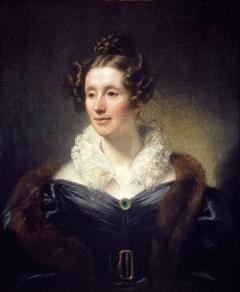Mary Somerville (1780-1872)
Mary Somerville was a Scottish scientist, writer and polymath, and became known as the "Queen of Science". In honour of her many achievements, the Mary Somerville Data Centre in the James Clerk Maxwell Building was named after her.

Mary Somerville was a Scottish writer, polymath and the world's first ever scientist, the person for whom the word was invented. She studied mathematics and astronomy, and was admitted as one of the first female members of the Royal Astronomical Society, alongside Caroline Herschel.
She campaigned for women's suffrage and access to education, notably having said "age has not abated my zeal for the emancipation of my sex from the unreasonable prejudice too prevalent in Great Britain against a literary and scientific education for women". Somerville campaigned against many forms of oppression and injustice, and protested slavery by refusing to take sugar in her tea.
Somerville was awarded a silver medal in 1811 for her solution to a diophantine problem, notoriously difficult equations to solve. In fact, one of these equations, known as Fermat's Last Theorem, was not solved for nearly four hundred years.
Somerville also wrote many successful journal articles and books in her lifetime. Her book "On the Connexion of the Physical Sciences" was its publisher’s highest-selling science book until Darwin’s "On the Origin of Species". Somerville's other notable contributions to science include being one of the first people to suggest the existence of Neptune, and famously tutoring Ada Lovelace, who went on to become the “mother of modern computing”.
When Somerville died in 1872, The Morning Post declared “whatever difficulty we might experience in the middle of the nineteenth century in choosing a king of science, there could be no question whatever as to the queen of science.”
The University has memorialised her many achievements through the naming of the Mary Somerville Data Centre within the James Clerk Maxwell Building.
To read more, please visit: Mary Somerville Wikipedia article
The unity shadowed forth in Mrs Somerville’s book is therefore a unity of the method of science, not a unity of the process of nature.

